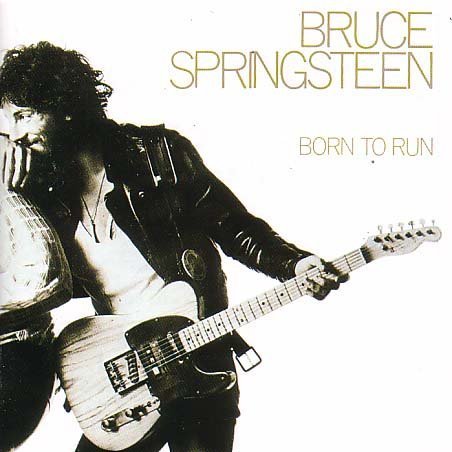
Born to Run (1975)

1. Thunder Road
2. Tenth Avenue Freeze Out
3. Night
4. Backstreets
5. Born to Run
6. She's the One
7. Meeting Across the River
8. Jungleland
By the time Born to Run was released in 1975, Bruce Springsteen had already established himself as a songwriter of considerable ambition. But it was this third album—not the critically admired Greetings from Asbury Park or the sprawling, mythic The Wild, the Innocent & the E Street Shuffle—that catapulted him into the national consciousness. It wasn’t merely a record; it was a declaration. Springsteen appeared, within the space of a single week, on the covers of Time and Newsweek, and with it came the full weight of expectation: the “future of rock and roll,” as some critics had already proclaimed him.
Unlike the sweeping, near-operatic narrative arcs of his The Wild, The Innocent and the E Street Shuffle LP, Born to Run refines the vision into sharper, standalone vignettes. If its predecessor unfolded like a boardwalk carnival of characters and confusion, this album plays like a spotlighted revue in a smoke-filled American Legion hall—each song a performance, each moment magnified.
Musically, the album marks a significant turning point. Springsteen’s lyrics remain central—poetic, visceral, and brimming with urban longing—but for the first time, the arrangements rival the words in their intensity. The E Street Band, now fully solidified with the additions of Roy Bittan (piano) and Max Weinberg (drums), deliver with newfound authority. There is a palpable sense of discipline amidst the fervor; the band’s interplay is tighter, the dynamics more considered, and the result is a sound that is both urgent and majestic.
The title track alone warrants its legendary status: a layered anthem of escape, romance, and defiance that captures the very essence of American rock. But Born to Run is no one-song album. Thunder Road opens the set with cinematic grandeur, its soft piano intro yielding to the full-throttle optimism of youth on the brink. Backstreets and Meeting Across the River delve into darker emotional terrain, rich in melancholy and tension. Tenth Avenue Freeze-Out offers an exuberant musical memoir of the band’s formation, while Jungleland—the album’s dramatic finale—unfolds like a symphonic street epic, complete with soaring saxophone, whispered tragedy, and operatic grandeur.
There is moodiness here, to be sure, but never despair. Even in the record’s most shadowed corners, there is motion—forward, outward, away. The characters are restless, driven by dreams as fragile as they are unshakable. And Springsteen, more than simply chronicling their lives, invests them with mythic dimension.
Born to Run was conceived as nothing less than the greatest rock and roll record ever made. Whether it achieves that ambition is ultimately a matter of taste. But what is beyond question is that it came remarkably close. It is an album of enormous scope and stunning coherence—classic in every sense—and remains an essential fixture in the canon of American music.
Go back to the main page
Go To Next Review